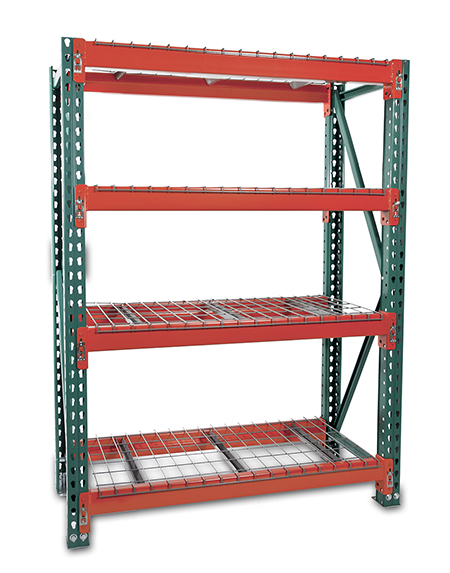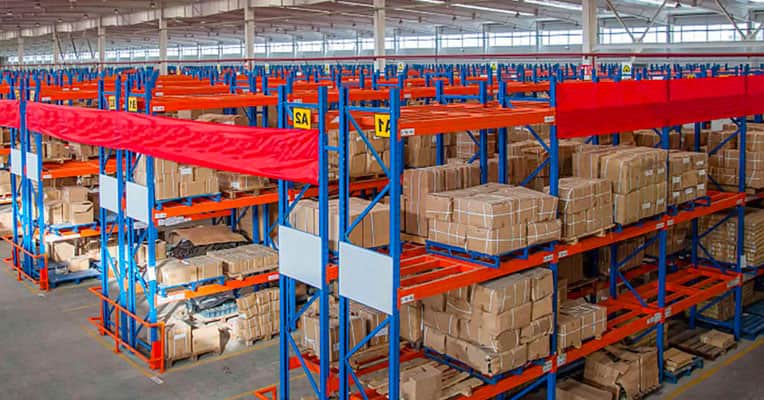In the realm of material handling and logistics, pallets play a crucial role in facilitating the storage, transportation, and stacking of goods. Pallets provide a stable and standardized platform for the safe movement of products across the supply chain. While wooden pallets have been widely used for decades, there is a growing demand for steel and metal pallets due to their enhanced durability, longevity, and efficiency. This article explores various types of steel and metal pallets, including steel pallets, galvanized pallets, stackable pallets, storage bin pallets, four-way entry pallets, two-way entry pallets, cage pallets, and spill pallets.
- Steel Pallets:
Steel pallets are manufactured using high-quality steel, making them exceptionally strong and durable. These pallets are ideal for heavy-duty applications and are capable of withstanding significant weight and impact. Steel pallets are resistant to fire, chemicals, and moisture, making them suitable for a wide range of industries, including manufacturing, warehousing, and transportation. Moreover, steel pallets are highly reusable, making them a cost-effective option in the long run. They can be easily cleaned and sanitized, making them ideal for industries with strict hygiene requirements such as food and pharmaceuticals.
- Galvanized Pallets:
Galvanized pallets are steel pallets that have been treated with a protective zinc coating. This coating provides enhanced corrosion resistance, extending the lifespan of the pallets even further. Galvanized pallets are particularly suitable for outdoor or humid environments where the risk of rusting is higher. The zinc coating acts as a barrier, preventing moisture and corrosive substances from coming into direct contact with the steel. This makes galvanized pallets a reliable choice for industries such as agriculture, construction, and marine transportation.
- Stackable Pallets:
Stackable pallets are designed with special features that allow them to be safely stacked on top of each other. These pallets typically feature a reinforced bottom structure and interlocking corners, ensuring stability and preventing slippage when stacked. Stackable pallets are an excellent space-saving solution, as they maximize vertical storage capacity. They are commonly used in warehouses, distribution centers, and retail environments where efficient use of space is essential. Additionally, stackable pallets facilitate easy access to goods during storage and retrieval processes, improving overall operational efficiency.
- Storage Bin Pallets:
Storage bin pallets combine the functionality of both a pallet and a storage container. These pallets feature integrated bins or compartments that provide additional organization and containment for smaller items. Storage bin pallets are commonly used in industries where small parts or components need to be stored and transported efficiently. They eliminate the need for separate containers, reducing handling time and minimizing the risk of lost or damaged items. Storage bin pallets are widely utilized in automotive manufacturing, electronics, and retail industries.
- Four-Way Entry Pallets:
Four-way entry pallets are designed with openings on all four sides, allowing forklifts and pallet jacks to access the pallet from any direction. This design provides flexibility in material handling operations and allows for easy maneuvering and positioning of the pallets. Four-way entry pallets are compatible with both two-way and four-way forklifts, making them versatile and adaptable to various warehouse layouts. They are an excellent choice for high-volume storage and transportation scenarios, reducing loading and unloading times.
- Two-Way Entry Pallets:
Two-way entry pallets, as the name suggests, feature openings on two opposite sides, enabling access and lifting from only two directions. These pallets are simpler in design compared to four-way entry pallets, but they still offer excellent stability and load-bearing capacity. Two-way entry pallets are commonly used in applications where the pallets are primarily handled by forklifts or pallet jacks in a specific orientation. They are often preferred in industries where space constraints or specific equipment limitations dictate the use of a particular entry type.
- Cage Pallets:
Cage pallets, also known as mesh pallets or wire mesh pallets, are designed with a steel or metal cage structure instead of a solid deck. The cage sides and base are typically constructed using welded wire mesh, providing visibility and ventilation for the stored goods. Cage pallets are commonly used in industries that require optimal airflow, such as the food and beverage industry, as well as in applications where product visibility and quick identification are essential. The mesh design also allows for the drainage of liquids, making cage pallets suitable for industries dealing with spillage-prone materials.
- Spill Pallets:
Spill pallets are specifically designed to prevent and contain the leakage of hazardous substances, chemicals, or liquids during storage or transportation. These pallets feature a built-in containment basin or sump that captures and contains any spills, ensuring compliance with environmental regulations and protecting the workplace from potential hazards. Spill pallets are often used in industries dealing with oil, chemicals, or other hazardous materials. They provide peace of mind by minimizing the risk of accidents, contamination, and environmental damage.
Benefits of Steel and Metal Pallets:
The utilization of steel and metal pallets offers several advantages over traditional wooden pallets:
- Durability and Longevity: Steel and metal pallets are highly durable and can withstand heavy loads, impacts, and harsh environments. They have a longer lifespan compared to wooden pallets, reducing the need for frequent replacements and resulting in cost savings.
- Enhanced Hygiene: Steel and metal pallets are easy to clean, sanitize, and maintain, making them suitable for industries with strict hygiene standards, such as pharmaceuticals and food processing. They are resistant to moisture, pests, and contaminants.
- Improved Safety: Steel and metal pallets provide better load stability, reducing the risk of load shifting or collapsing during transportation. They are also fire-resistant, adding an extra layer of safety in case of fire hazards.
- Sustainability: Steel and metal pallets are highly recyclable, contributing to a more sustainable supply chain. Unlike wooden pallets, they do not require cutting down trees, and they can be recycled at the end of their lifespan.
Follow us on LinkedIn, Facebook, and Twitter for more updates and news regarding products and
Product Enquiry



